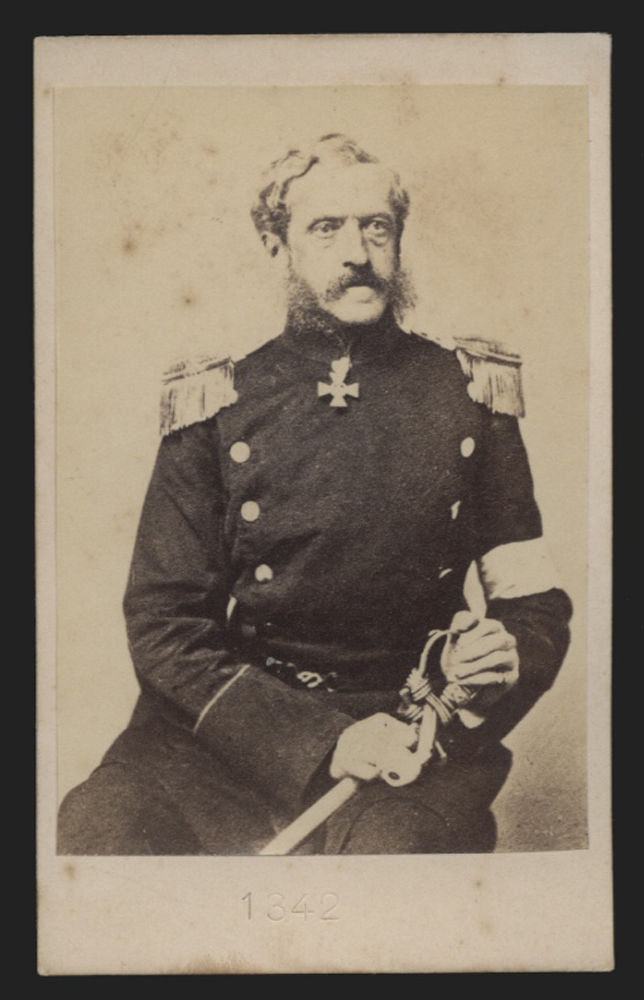Bernhard Von Langenbeck on:
[Wikipedia]
[Google]
[Amazon]


 Bernhard Rudolf Konrad von Langenbeck (9 November 181029 September 1887) was a German surgeon known as the developer of Langenbeck's amputation and founder of ''
Bernhard Rudolf Konrad von Langenbeck (9 November 181029 September 1887) was a German surgeon known as the developer of Langenbeck's amputation and founder of ''


 Bernhard Rudolf Konrad von Langenbeck (9 November 181029 September 1887) was a German surgeon known as the developer of Langenbeck's amputation and founder of ''
Bernhard Rudolf Konrad von Langenbeck (9 November 181029 September 1887) was a German surgeon known as the developer of Langenbeck's amputation and founder of ''Langenbeck's Archives of Surgery
''Langenbeck's Archives of Surgery'' (or in German, ''Langenbeck's Archiv für Chirurgie''), established in 1860 as ''Archiv für Klinische Chirurgie'' by founding editor Bernhard von Langenbeck, is the oldest medical journal of surgery in the wor ...
''.
Life
He was born at Padingbüttel, and received his medical education at Göttingen, where one of his teachers was his uncle Konrad Johann Martin Langenbeck. He took his doctorate in 1835 with a thesis on the structure of theretina
The retina (from la, rete "net") is the innermost, light-sensitive layer of tissue of the eye of most vertebrates and some molluscs. The optics of the eye create a focused two-dimensional image of the visual world on the retina, which then ...
. After a visit to France and England, he returned to Göttingen as '' Privatdozent'', and in 1842 became Professor of Surgery and Director of the Friedrichs Hospital at Kiel
Kiel () is the capital and most populous city in the northern German state of Schleswig-Holstein, with a population of 246,243 (2021).
Kiel lies approximately north of Hamburg. Due to its geographic location in the southeast of the Jutland pe ...
. Six years later he succeeded Johann Friedrich Dieffenbach (1794–1847) as Director of the Clinical Institute for Surgery and Ophthalmology at the Charité in Berlin, and remained there till 1882, when failing health forced him to retire.
Langenbeck was a bold and skillful surgeon, but preferred not to operate while other means afforded a prospect of success. He specialised in military surgery
The term military medicine has a number of potential connotations. It may mean:
*A medical specialty, specifically a branch of occupational medicine attending to the medical risks and needs (both preventive and interventional) of sold ...
and became an authority on the treatment of gunshot wounds. He served as general field-surgeon of the army in the First Schleswig War in 1848 and saw active service in the Second Schleswig War in 1864, being ennobled for his services. He also served in the Austro-Prussian War in 1866, and the Franco-Prussian War of 1870–71. He was in Orléans at the end of 1870 after the city had been taken by the Prussia
Prussia, , Old Prussian: ''Prūsa'' or ''Prūsija'' was a German state on the southeast coast of the Baltic Sea. It formed the German Empire under Prussian rule when it united the German states in 1871. It was ''de facto'' dissolved by an ...
ns and in his capacity as surgeon or as consultant tended to the wounded men with whom every public building was packed. He also utilized the opportunities for instruction that thus arose, and the Militär-ärztliche Gesellschaft, which met twice a week for some months, and in the discussions of which every surgeon in the city, irrespective of nationality, was invited to take part, was mainly formed by his energy and enthusiasm. He died at Wiesbaden
Wiesbaden () is a city in central western Germany and the capital of the state of Hesse. , it had 290,955 inhabitants, plus approximately 21,000 United States citizens (mostly associated with the United States Army). The Wiesbaden urban area ...
in September 1887.
At the Geneva International Convention, he endorsed the German Emperor's quote on conduct "a wounded enemy is no more an enemy, but a comrade needing help".
von Langenbeck is perhaps best known today as the "father of the surgical residency". Under his tutelage at the Charite in Berlin, he conceived and developed a system whereby new medical graduates would live at the hospital as they gradually assumed a greater role in the day-to-day care and supervision of surgical patients. Among his most well-known "house staff" were such surgeons as Billroth and Emil Theodor Kocher
Emil Theodor Kocher (25 August 1841 – 27 July 1917) was a Swiss physician and medical researcher who received the 1909 Nobel Prize in Physiology or Medicine for his work in the physiology, pathology and surgery of the thyroid. Among his many ...
. The great achievement of his house-staff model was acknowledged by no less than Sir William Osler and William Halsted, who quickly co-opted his concept into the teaching system of the Departments of Medicine and Surgery, respectively, at the Johns Hopkins University Hospital
The Johns Hopkins Hospital (JHH) is the teaching hospital and biomedical research facility of the Johns Hopkins School of Medicine, located in Baltimore, Maryland, U.S. It was founded in 1889 using money from a bequest of over $7 million (1873 mo ...
in the late 19th century.
References
External links
* * {{DEFAULTSORT:Langenbeck, Bernhard von 1810 births 1887 deaths People from Cuxhaven (district) German surgeons German military personnel of the Franco-Prussian War Prussian people of the Austro-Prussian War German military doctors People from the Kingdom of Hanover University of Göttingen alumni Academic staff of the University of Kiel Academic staff of the Humboldt University of Berlin Prussian generals Physicians of the Charité Military personnel from Lower Saxony